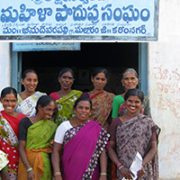Archive | Finance sector development RSS feed for this section
Economics, Finance sector development, Industry and trade
 Economics, Finance sector development, Governance and public sector management
Economics, Finance sector development, Governance and public sector management
 Economics, Education, Finance sector development
Economics, Education, Finance sector development
 Economics, Finance sector development, Governance and public sector management
Economics, Finance sector development, Governance and public sector management
 Economics, Finance sector development, Governance and public sector management
Economics, Finance sector development, Governance and public sector management
 Economics, Finance sector development, Governance and public sector management
Economics, Finance sector development, Governance and public sector management
 Finance sector development
Finance sector development
 Finance sector development
Finance sector development
 Finance sector development
Finance sector development
 Finance sector development
Finance sector development

How does exchange rate volatility affect value added and gross trade?

The rise of Donald Trump has reignited the debate on the link between exchange rates and trade. The Trump administration has blamed the exchange rate policies of the People’s Republic of China (PRC), Japan, and Germany for the current account deficit in the United States (US), and the president’s Twitter posts have put many major currencies on a roller coaster ride. Now, policy makers around the globe are concerned about the negative impact of exchange rate volatility on world trade.
Escaping the middle income trap: Innovate or perish

The “middle income trap” captures the situation where a middle income country can no longer compete internationally in standardized, labor-intensive commodities because wages are relatively too high, and it can also not compete in higher value added activities on a broad enough scale because productivity is relatively too low. The result is slow growth, stagnant or falling wages, and a growing informal economy.
Hometown investment trust funds: A sustainable solution for financing green energy projects

The Fukushima Daiichi nuclear disaster was an energy accident at the Fukushima No. 1 Nuclear Power Plant in Fukushima, Japan, initiated primarily by the tsunami that followed the Tohoku earthquake on 11 March 2011 and led to a nuclear shutdown in the country. Japan substituted the loss of nuclear power with fossil fuels, such as oil, gas, and coal, and became more dependent on their imports and consumption.
Assessing the BOJ’s yield curve control policy

The Bank of Japan (BOJ) announced in September last year that it would be switching the focus of its quantitative easing program from monetary base targeting to controlling the shape of the yield curve (Bank of Japan, 2016). A brief comparison of the two frameworks is as follows. The previous monetary easing framework, Quantitative and Qualitative Monetary Easing (QQE) with a Negative Interest Rate, set out three policy dimensions: quantity, quality, and interest rates.
Ultra-low interest rates and wandering overinvestment cycles in East Asia

In the 1960s, Kaname Akamatsu (1961) described the gradual relocation of industries from the advanced industrialized countries in East Asia to the less advanced countries during the latter’s economic catch-up process as the “flying geese” pattern. For instance, the textile industry was clustered in Japan in the 1950s but then successively relocated to the newly industrialized economies (Hong Kong, China; Taipei,China; Singapore; and the Republic of Korea), the new generation of tiger countries (Indonesia, Malaysia, the Philippines, and Thailand), the People’s Republic of China (PRC), and now increasingly to Viet Nam.
The brief for cash

Cash is an extremely useful social contrivance. Two possible drawbacks of high-denomination cash have recently been discussed by Kenneth Rogoff (2016) in his book, The Curse of Cash, and echoed by other economists. They are the extensive use of high-denomination cash by criminals and others engaged in illicit and corrupt activities, and the role that cash plays in avoiding deeply negative nominal interest rates imposed on bank accounts. Rogoff and others call for a phasing-out of high denomination cash over a long period.
One year after the Fed liftoff: Consequences for emerging markets

The Federal Open Market Committee, the official policy making body of the Board of Governors of the Federal Reserve System (Fed), announced the long-awaited increase, or liftoff, in the federal funds rate of 0.25% just over a year ago in December 2015. This action represented the beginning of a “return to normalcy” from the period since 2008 when the Federal Reserve had been operating at the zero lower bound. With the liftoff already 1 year behind us, market watchers widely expect continued, even abrupt, increases in United States (US) interest rates in the coming year.
Bridging the “missing middle” between microfinance and SME finance in South Asia

With financial inclusion finding a place in the international policy agenda, many developing countries are facilitating the development of their microfinance sectors. However, not enough attention has been paid to carving out a route for microfinance borrowers who outgrow microfinance, requiring loan sizes higher than the upper threshold of microcredit, still too small to avail of small and medium-sized enterprise (SME) credit from commercial banks. Other small enterprises that are unbanked also have needs unmet by microfinance institutions (MFIs) or commercial banks.
Assessing policies to promote financial inclusion, regulation, and education in emerging Asia

Financial inclusion has been receiving increasing attention for its potential to contribute to economic and financial development while fostering more inclusive growth and greater income equality. There are numerous arguments in favor of increasing financial inclusion, and a large body of evidence shows that increased financial inclusion can significantly reduce poverty and boost shared prosperity. Greater access to financial services by households can help smooth consumption, ease cash shortages, and increase savings for retirement and other needs, although the evidence on microfinance is less positive.
The institutionalization of the credit surety fund in the Philippines

The local business community is upbeat with the passing into law of Republic Act 10744, otherwise known as the Credit Surety Fund Cooperative Act of 2015 on 6 February 2016. Essentially, the said law provides for the creation and organization of the Credit Surety Fund (CSF) cooperatives to manage and administer credit surety funds and to enhance the accessibility of micro, small, and medium-sized enterprises (MSMEs); cooperatives; and nongovernment organizations (NGOs) to bank credit facilities.


Search
Subscribe / Connect to Asia Pathways
Subjects
- Accelerating Progress in Gender Equality
- Addressing Remaining Poverty and Reducing Inequality
- Agriculture and natural resources
- Capacity development
- Climate change
- Economics
- Education
- Energy
- Environment
- Finance and Innovation
- Finance sector development
- Gender
- Globalization and Economic Stability
- Governance and public sector management
- Health
- Human Capital Development for Inclusive Growth and Shared Prosperity
- Industry and trade
- Information and Communications Technology
- Infrastructure
- Making Cities More Livable
- Miscellaneous
- Population
- Poverty
- Private sector development
- Regional cooperation and integration
- Sanitation
- Social development and protection
- Strengthening Governance and Institutional Capacity
- Subjects
- Transport
- Uncategorized
- Urban development
- Video Blog
- Water
Recent Posts
- The Promise and Perils of Mother Tongue-Based Education
- From Crisis to Resilience: The Evolution of the Banking Sector in Asia and the Pacific
- Tariffs on the Table: What Could Be Asia’s Next Move?
- Investing in Childcare a Win for Women and the Economy
- Flush and Flourish: Upgraded Toilets Can Transform Lives in Rural Asia




Recent Comments